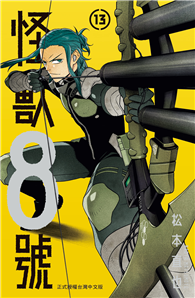The most significant part of Admiral Struble’s memoir is comprised of descriptions of his role in the area of amphibious warfare in World War II and Korea. Struble graduated from the Naval Academy in 1915 and served in several ships as a junior officer, including the refrigerated stores ship USS Glacier (AF-4) during the early part of World I and soon after commanded the destroyers USS Stevens (DD-86) and USS Shubrick (DD-268). In the 1920s he was in the crew of the battleship USS California (BB-44) and remained on board as a member of the staff of Commander Battleships and later Commander Battle Force. He was involved in amphibious landing exercises in the early 1930s on the staff of Commander Battleship Division Three, 64-65. Duty in the battleship USS New York (BB-34) and the heavy cruiser USS Portland (CA-33) was sandwiched around service as communications officer of the 12th Naval District. He had tours in the politico-military Central Division of OpNav in the late 1930s and early 1940s. At the outset of World War II he commanded the light cruiser CA Trenton (CL-11). In 1943-44 Struble served as chief of staff to Commander Task Force 122 for the American naval portion of the invasion of Normandy, France, on D-Day. Shortly after, he commanded amphibious groups that liberated the Philippine Islands in the war against Japan. He had a number of encounters with Army General Douglas MacArthur during that campaign and a few years later during the Korean War. After the war’s end, Struble commanded Mine Force Pacific Fleet and Amphibious Force Pacific Fleet. He served 1948-50 as Deputy Chief of Naval Operations (Operations) and in 1950-51 was Commander Seventh Fleet at the outset of the Korean War. The oral history contains Struble’s detailed recollections of the September 1950 invasion of Inchon, Korea. In 1951-52 he was Commander First Fleet and from 1952 to 1955 was assigned as a U.S. representative to the United Nations.
| FindBook |
有 1 項符合
Reminiscences of Adm. Arthur D. Struble, USN (Ret.)的圖書 |
 |
Reminiscences of Adm. Arthur D. Struble, USN (Ret.) 作者:Struble 出版社:US Naval Institute Press 出版日期:1970-05-15 語言:英文 規格:精裝 / 484頁 / 27.94 x 21.59 x 2.69 cm / 普通級/ 初版 |
| 圖書館借閱 |
| 國家圖書館 | 全國圖書書目資訊網 | 國立公共資訊圖書館 | 電子書服務平台 | MetaCat 跨館整合查詢 |
| 臺北市立圖書館 | 新北市立圖書館 | 基隆市公共圖書館 | 桃園市立圖書館 | 新竹縣公共圖書館 |
| 苗栗縣立圖書館 | 臺中市立圖書館 | 彰化縣公共圖書館 | 南投縣文化局 | 雲林縣公共圖書館 |
| 嘉義縣圖書館 | 臺南市立圖書館 | 高雄市立圖書館 | 屏東縣公共圖書館 | 宜蘭縣公共圖書館 |
| 花蓮縣文化局 | 臺東縣文化處 |
|
|
圖書介紹 - 資料來源:博客來 評分:
圖書名稱:Reminiscences of Adm. Arthur D. Struble, USN (Ret.)
|











